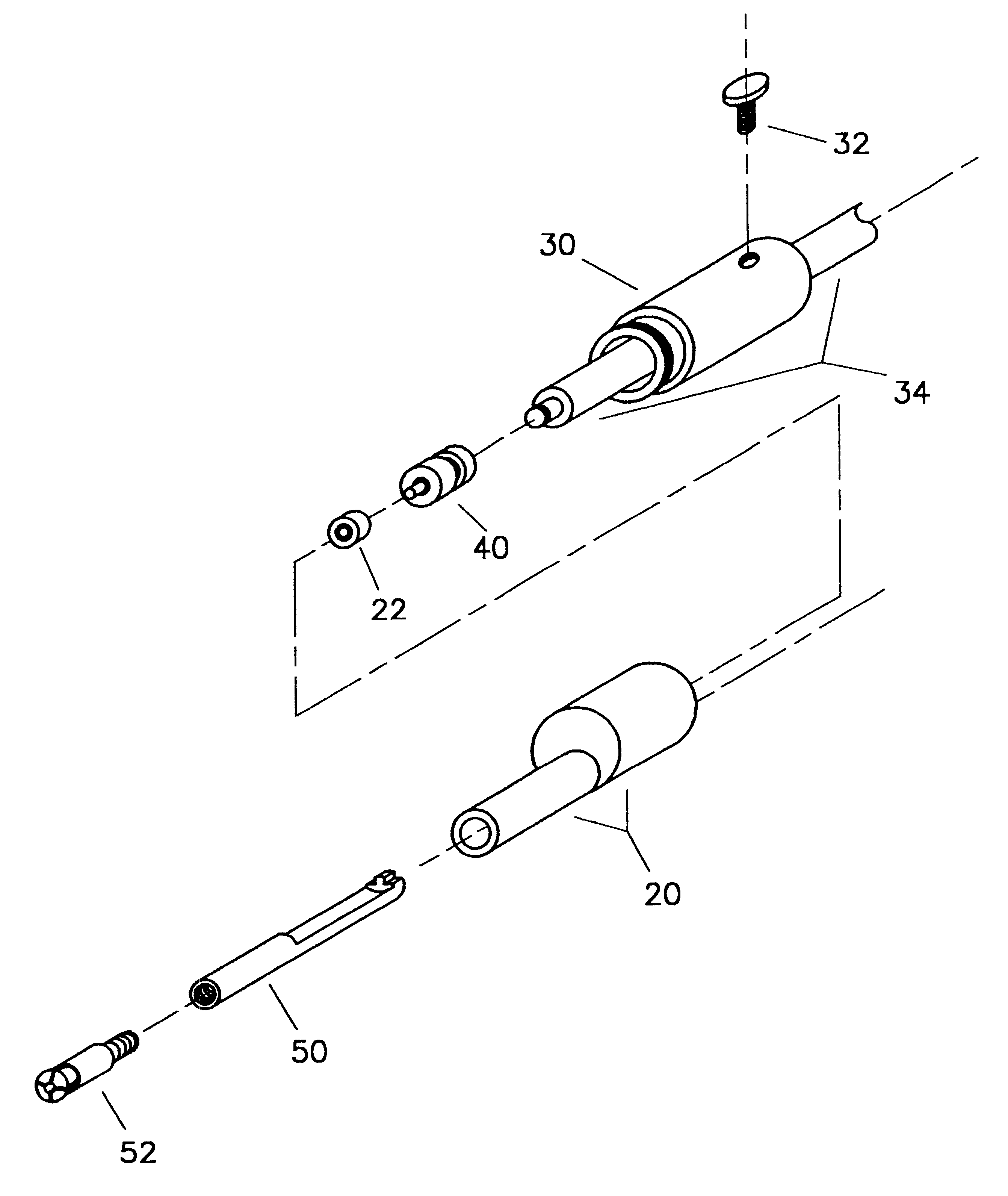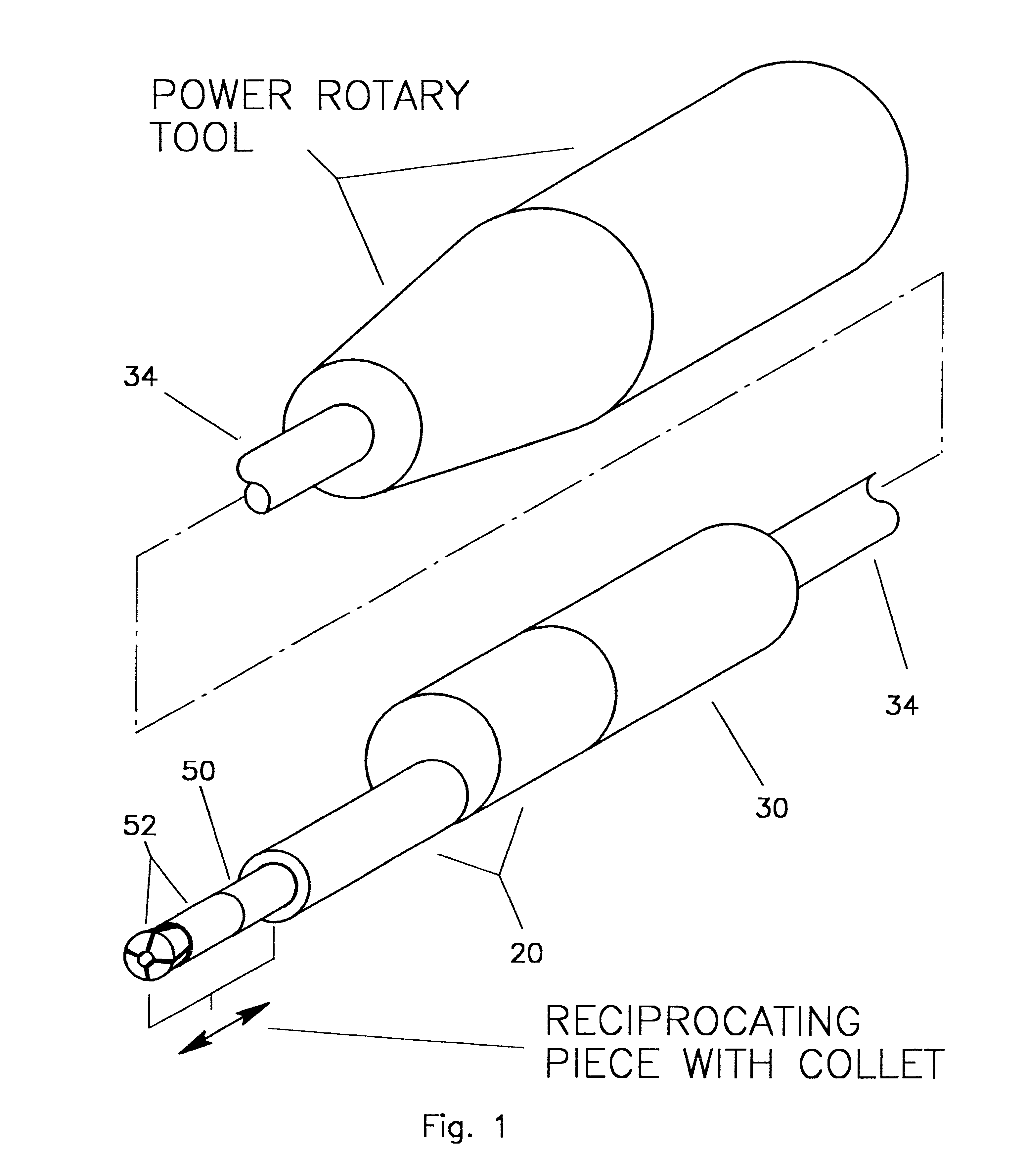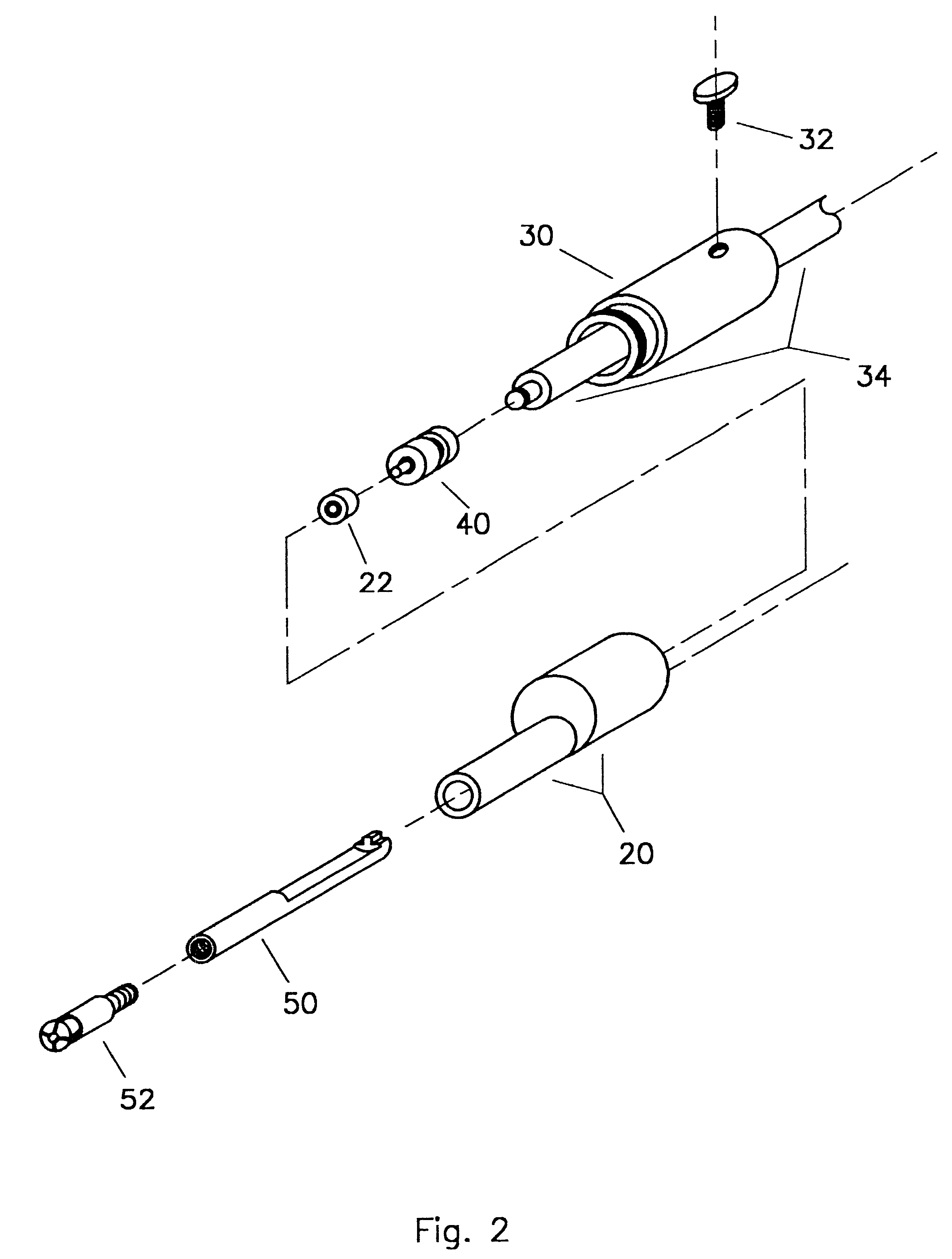Such tools currently available exhibit problems in regards to delicate, detail work.
Although such rotary tools are very useful in numerous applications they do have limitations.
When trying to perform detailed shaping or precise removal of material from a work piece with a hand-held rotating tool, a ball grinder, sanding disc or drum, or cutting wheel attachment can grab a material and cause a tool to be pulled in an unwanted direction thereby blemishing or even destroying a work piece.
For one example of a professional application, this potentially damaging
scenario is a real concern when modifying or repairing very expensive electronic
printed circuit board assemblies.
When the operator loses control of a rotary
cutting tool due to grabbing numerous unwanted clad traces can be severed, sometimes in an un-repairable area of the board, resulting in hundreds or thousands of dollars in wasted inventory.
Also, using a manual hobby razor knife in such as application requires quite a bit of force that can promote slipping and loss of control.
Cutting with a rotary tool is limited to the use of a
spinning,
abrasive cutting wheel, and gaining access to a desired area of a work piece at a desired cutting angle is sometimes impossible to achieve.
This is because rotary cutting tools have a limitation in that some of the parts comprising the drive mechanism of the cutting wheel are either above, below, to the right, or to the left of the plane of the cutting wheel depending on orientation.
Carving with a hand-held rotary tool requires the use of a
spinning, course-cutting attachment that, too, can catch on a material, cause a tool to be pulled in an unwanted direction, and cause damage to a work piece.
Sawing with a hand-held rotary tool is limited to the use of a
spinning,
abrasive cutting wheel, or a round saw with teeth, and gaining access to a desired area of a work piece at a desired cutting angle is sometimes impossible to achieve.
Chiseling with a hand-held rotary tool using only rotating motion is potentially dangerous because it requires a rotating bit containing cutting blades that is difficult to control and certainly not suited for fine, detail work.
Filing with a hand-held rotary tool is limited to a use of a spinning,
abrasive cutting wheel or a spinning abrasive bit.
Gaining access to a desired area of a work piece at a desired angle with an abrasive wheel for filing is sometimes impossible to achieve, and filing with a spinning abrasive bit can cause unwanted variable-depth cuts, or unwanted grooves, in a work surface.
Sanding with a hand-held rotary tool requires a spinning sanding disc or a sanding drum attachment that can grab a material, cause a tool to be pulled in an unwanted direction, and either cause damage to or destroy a work piece.
Some available hand-held reciprocating tools are too large and too heavy to hold properly for extreme detail work because they include an
AC motor or a
DC motor with batteries.
Also, they are more dedicated to certain applications, such as just sanding or just
carving, and don't allow for an assortment of tool attachment types.
Some do not hold tool attachments firmly enough for extremely fine control of a tool attachment.
Reciprocating
carving tools that don't activate until the cutting edge is pressed against the work piece with a force parallel to the longitudinal axis are not suited for
knife blades, saw blades, files, and sanders because such tool attachments require pressure to be applied perpendicular to the tool's longitudinal axis.
Therefore, force-activated tools are typically limited to chisels and gouges and are not suited for delicate work because the required force to active may exceed the
mechanical strength of the work piece.
Hammer-type reciprocating tools impart a potentially damaging impulse to delicate work pieces.
They do not allow for a fine degree of force control required for delicate work pieces.
Engravers are reciprocating tools, but they are limited in their ability to provide a variable-speed, variable-length
stroke.
They also are not suited for the use of other types of cutting tools and are dedicated to
engraving only.
The referenced inclined annular groove will result in large acceleration and deceleration forces between the annular groove and the ball and socket
set screw.
Furthermore, a spring's response limited the attainable reciprocating frequency.
Furthermore, the saw blade is attached with screws that are subject to loosening under vibration and the saw blade mounting method requires that either special, non-standard saw blades be purchased by the
consumer or requires that the
consumer modify existing saw blades for adequate mounting.
The elliptical
orbit will result in large acceleration and deceleration forces between the cam groove and the cam key resulting in excessive wear.
A
variable angle reciprocating tool in U.S. Pat. No. 5,832,611 to Schmitz, Nov. 10, 1998, claimed a motor housing and motor and is bulky and heavy, which is a negative in regards to fine detail work.
A low vibration motion
translation system in U.S. Pat. No. 6,012,346 to Vo, Jan. 11, 2000, claims a low vibration motion
translation system but it neither provides a detailed solution for affixing an outside housing, which would thereby make a hand-held device for an
end user, nor does it provide detailed solutions for easily affixing various tools to the reciprocating piece.
Furthermore, its hammer-type action could impart a potentially damaging impulse to delicate work pieces
A
variable angle reciprocating tool in U.S. Pat. No. 6,138,364 to Schmitz, Oct. 31, 2000, employed multiple gears and multiple bearings which make the
assembly more complex and therefore more prone to mechanical problems.
Furthermore, I am very familiar with both the hobby industry and the tool industry and have never seen anything like my hand-held, reciprocating attachment promoted for sale.
Rotary cutting wheels and rotary saw blades have a limitation in that the depth of any
cut cannot exceed their
radius due to the interfering axial drive.
No use of gears allows for improved wear by eliminating more wear surfaces and minimizing potential mechanical problems.
The need to place excessive pressure on a cutting edge for some applications is dangerous and can injure a user if the cutting edge slips, and can also be damaging to the work piece.
Also excessive pressure on a cutting edge can reduce accuracy.
Also, numerous strokes are quite often required, at the expense of time and energy, to
cut through material or to remove a desired amount of material.
This leads to user fatigue and loss of accuracy.
A greater number of strokes, again, leads to user fatigue and loss of accuracy.
 Login to View More
Login to View More 


